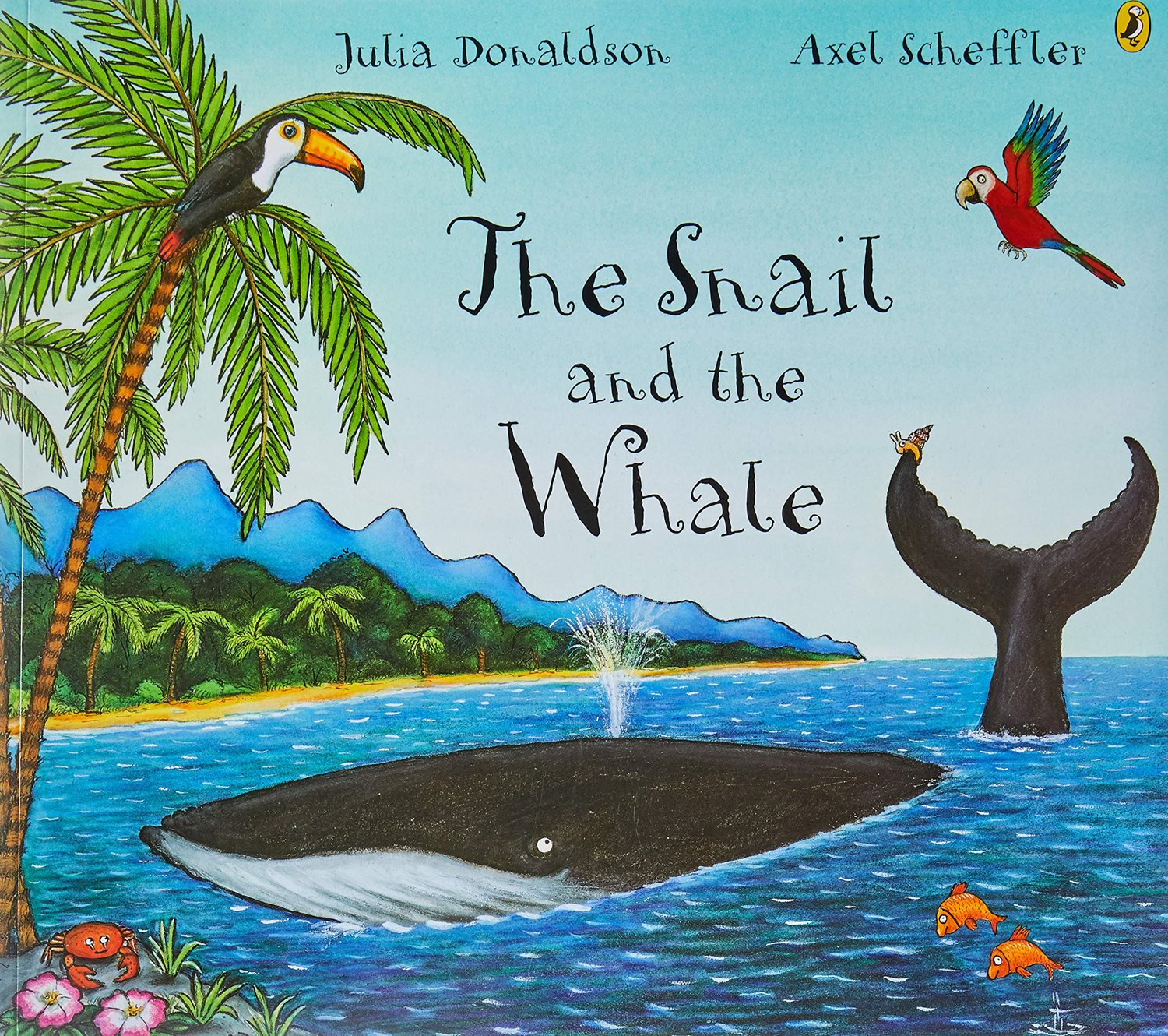This month's Book Nook topic is...
Building Sound Awareness with The Snail and the Whale

Sound awareness, also known as “phonological awareness”, means understanding that words can be broken down into syllables and syllables can be broken down into individual sounds. Having an awareness of these sounds prepares children for connecting the letters they see on a page with the sounds they represent, which is critical for making sense of print.
Rhyming books are great tools for promoting sound awareness. In fact, one of the first signs that a child is developing sound awareness is when he starts to recognize rhymes in books or songs. While this segment focuses on books, songs are also a great way to expose children to rhyme. For example, in the song Twinkle Twinkle Little Star, you can emphasize “little star” and “what you are”. At The Hanen Centre, we use a strategy called “Listen… and Find One Like It” to help children pay attention or “tune in” to words that start (alliteration) or end (rhyme) with the same sound.
Let’s look at some ways you can apply this strategy with a fun rhyming book.
Let’s get started!
The Book:
The Snail and the Whale by Julia Donaldson
Why we picked it
This is an engaging story about a snail who gets to see the world as a passenger on the tail of a whale. When the whale gets beached in a bay, it is up to the snail to find a way to save him. The entire book is written in rhyme so it’s great for building sound awareness.
The strategy Listen... and Find One Like It
Step 1 – Listen
Even very young children benefit from being read rhyming books where you stress the rhyming words. Through hearing these books, children learn to listen to words not just for meaning but also for the way they sound. By around 3 years of age, children are also able to more specifically listen for rhyming.
When reading (or singing) with your child, you can start drawing his attention to the words that rhyme after you’ve emphasized them yourself. If you’re reading The Snail and the Whale, you could say: “Listen, ‘snail’ and ‘whale’ rhyme – they sound the same at the end. Listen. ‘Snail’. ‘Whale’.”
Step 2 – Find One Like It
The next step would be to encourage your child to find another rhyming word. You could say: “Let’s think of another word that sounds like ‘snail’ and ‘whale’. How about ‘trail’? ‘Trail’ sounds like ‘snail’ and ‘whale’. ‘Snail,’ ‘whale’ and ‘trail’ all rhyme. They all sound the same at the end of the word.”
Many young children won’t yet be able to initially produce a rhyming word, and that’s fine! Exposing them to the idea of rhyming words will build their sound awareness. Offer many of your own examples of rhyming words before expecting them to come up with their own.
The first time you read the book
During the first read, you child is just getting familiar with the story. For this reason, you don’t want to interrupt the flow of the story too much by pausing to discuss the words that rhyme. Instead, you can simply build your child’s awareness of the rhyming words by emphasizing them as you read. This can be done with children of all ages.
For example, on the page where the whale appears one night, you could exaggerate the words in bold below:
“This is the whale who came one night”
“When the tide was high and the stars were bright”
For older children, you can also pause before the second rhyming word (“bright” in this example) to see if your child wants to try to fill in the missing word.
Later readings
Once you’ve read the story more than once, you can pause to have a short conversation about the words that rhyme. You can read a page, and then say “Listen. ‘lightening’ sounds like ‘frightening’. ‘Lightening’ and ‘frightening’ rhyme. Do you hear how they sound the same at the end of the word? ‘Lightening’. ‘Frightening’.”
Once you’ve pointed out several rhyming words at different points throughout the story, you can ask your child to think of one himself. You could say, “Can you think of another word that rhymes with ‘land’ and ‘sand’?” Then wait quietly for a few seconds to see if he attempts to fill in a word. If you wait for five to ten seconds and your child doesn’t respond, you can then go ahead and help him by offering an example: “What about ‘hand’?”. “’Land,’ ‘sand’, and ‘hand’ all sound the same at the end – they all rhyme.”
This strategy can be a lot of fun and gets really silly quickly as children often start making up nonsense words when they can’t think of a real word that rhymes. After a while, try to get your child to find rhymes in other books you read together or in songs or nursery rhymes he likes. You can also talk about words that rhyme throughout the day – during meal-time, bath time or at the grocery store!
Happy sound awareness building!
More Resources
The strategies in this Book Nook post are drawn from Hanen’s practical, research-based guidebooks for building emergent literacy. Explore the links below to learn more about how these guidebooks can support you.
For Parents I'm Ready! guidebook
I'm Ready! guidebook
For Educators ABC and Beyond guidebook
ABC and Beyond guidebook
